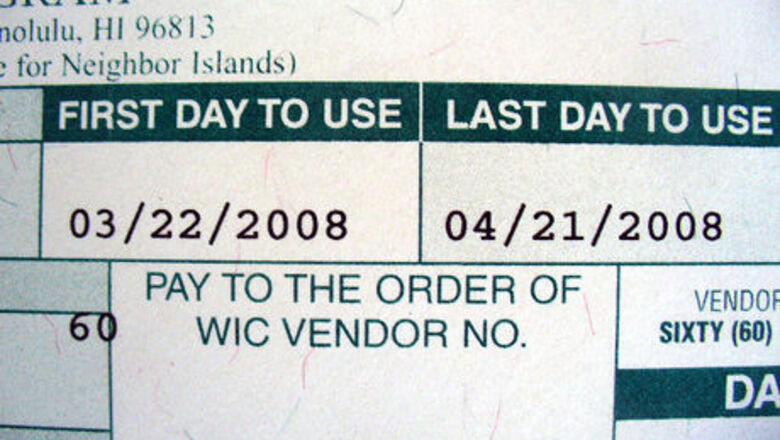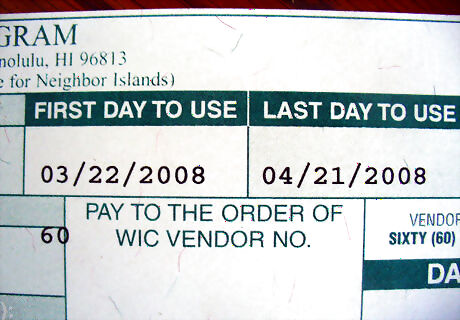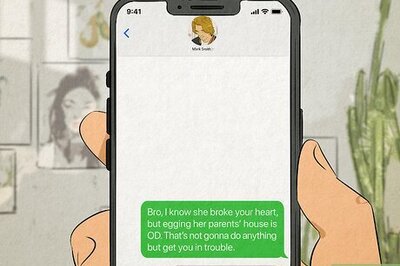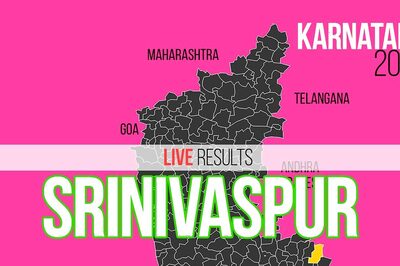
views
WIC (an abbreviation for Women, Infants, and Children) is a Federal assistance program in the US that provides nutritional and supplemental food to newborns and children up to the age of 5 who are at a level of nutritional risk, as well as low-income pregnant, breastfeeding, and non-breastfeeding postpartum women.[1]
X
Research source
The program is available in all 50 States, 34 Indian Tribal Organizations, America Samoa, the District of Columbia, Guam, the Commonwealth Islands of the Northern Marianas, Puerto Rico, and the Virgin Islands.[2]
X
Research source

Look at the different sections. Each section has its own use and requirements. The most important one is the "First Date to Use" and the "Last Date to Use". These two dates are defined as the times that you are allowed to use the checks and when they expire. If the "Last Date to Use" has passed with the check unused, return it to your local WIC office or destroy it. P1020248_300.JPG Food List: The food list is important because it tells you specifically what you can purchase and the amount of each item. There are no substitutions allowed and each food brand item, whether it's cereal, eggs, or juice, needs to be on the WIC Food List -- the brochure you get with your checks that lists the acceptable brands, sizes, and flavors.P1020247_384.JPG "Date of Use" and "Amount": The Date may be filled out by you or the store, depending on the state; the Amount is for the store cashier to fill out.P1020244_532.JPG WIC ID or Client ID: This needs to match the number on your WIC folder. Be sure to double check before leaving the WIC office so that you get your benefits, and don't deny another family their benefits. Signature: You'll need to sign (and perhaps date) this section in front of the cashier. Do not sign prior to using it.P1020246_588.JPG
Look at the food list. The descriptions will tell you specifically what you can get. If it says "24-36 oz - Dry Cereal", you may get any combination of approved cereal that adds up to at least 24 but no more than 36 ounces. Most items, however, must match exactly the listed amount, size, and type. For example, "1 dozen large eggs" must be 12 eggs, not 6, 8, or 18; large, not medium or jumbo; and white, not brown or organic. You can also buy fewer items than are on the check, but the check will not be given back to you to buy the remaining items later.
Separate WIC items from regular purchases. Place your WIC items first on the conveyor belt and place the specific WIC check on top of the items. This is to alert the cashier that it is a WIC purchase; some grocery cash registers must ring up WIC purchases in a separate mode. Put a grocery divider after each WIC purchase if you are using more than one check. Also, place a divider between the WIC items and your other groceries.
Present your WIC folder (or ID) to the cashier. The cashier will need to verify that your signature is on it in order to start the WIC purchase. You may be required to present a valid picture ID, as well.
Sign your WIC check. This is how the store gets paid for the WIC purchase. Some states may require you to sign a receipt, as well. You may or may not get a (second) receipt for your own records, depending on the state and store policy. You probably won't be returning the food to the store (and in some states, it is illegal to try to do so), so having a receipt usually doesn't matter.




















Comments
0 comment